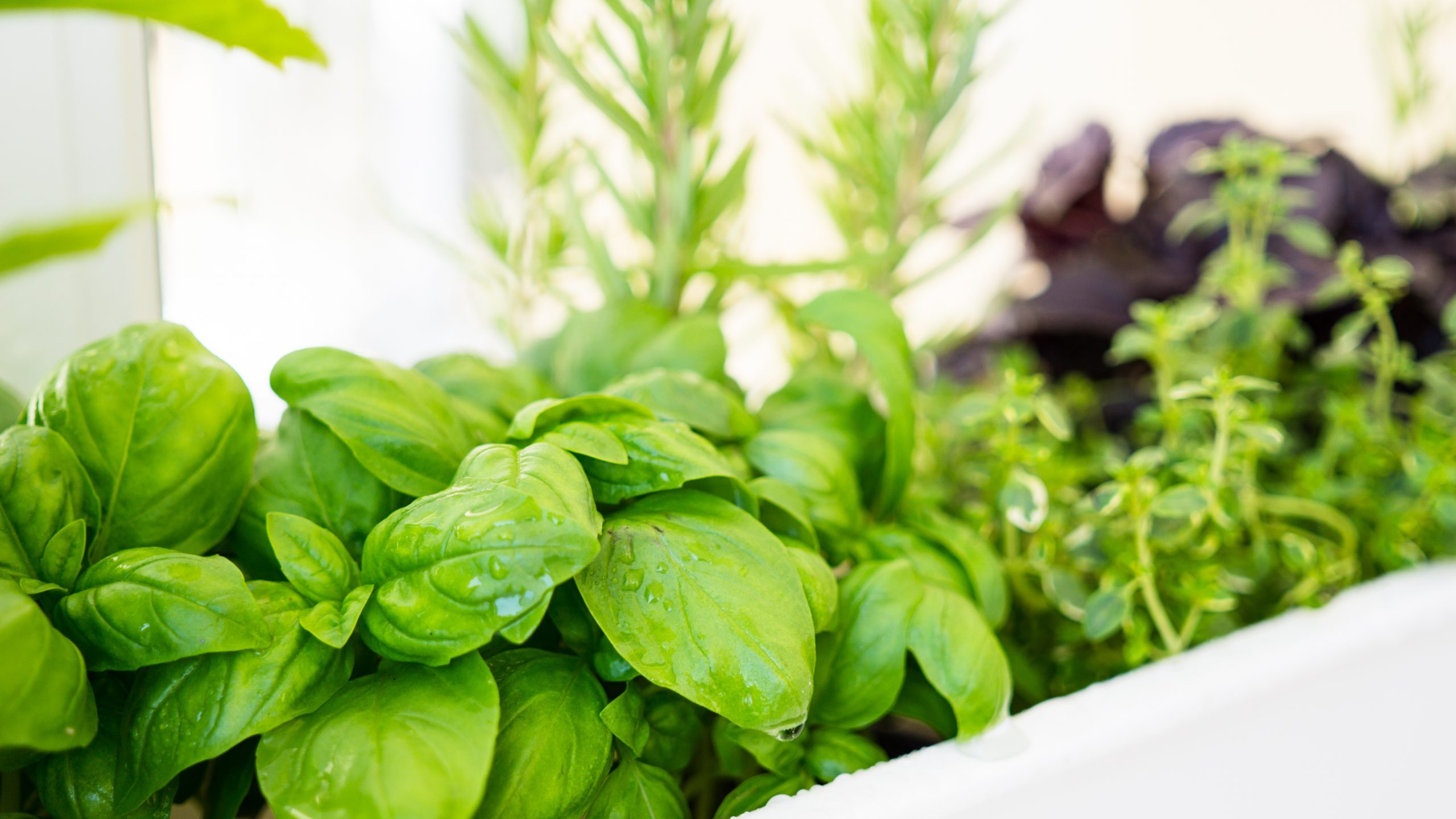
Growing your own herbs not only helps you feel connected to what you eat, but it’s also a great way to save money. Instead of buying herbs for every recipe, you can purchase a plant once and keep a continuous, fresh supply on hand — simply snip off what you need, when you need it!
Co-op Favorites
We’re continually expanding our herb selection at the Mississippi Market Plant Sale. Keep an eye out for beloved favorites and exciting new varieties:
Basil
This year we will have lots of varieties of basil. You’ll find several downy-mildew-resistant ones like Elenora, Devotion, Obsession and Passion. African Blue will be back, which is more tolerant to lower temperatures than other basils, delicious in pesto, and loved by pollinators. You can also find purple, lemon, Greek, Thai, Tulsi and Holy basils at the sale!
Lavender
We will have 13 varieties of lavender this year, with favorites like:
- Munstead (winter-hardy)
- Provence (tall and aromatic)
- French Dentata (long growing season, fringed leaves, great in pots)
- Big Time Blue (full, beautiful blooms)
New this year:
- Sensational lavender from Rush Creek Growers: Easy to grow and has a compact form. The foliage is silvery green and the flower spikes are plentiful. It has some cold tolerance (Zone 5) and might make it through the winter here in the city if it is protected. A favorite of bees and other pollinators!
- Pink Perfume lavender: Rosey, pale pink flowers with silvery gray foliage. Strong stems make it an excellent cut flower.
- Royal Velvet: Very fragrant with dark, navy blue flowers. Rapid-growing and cold-tolerant.
Chamomile
- German Chamomile: Makes a soothing tea and will re-seed in your garden
- Polish Zloty Lan Chamomile: A taller and more vigorous plant than its cousin German Chamomile. Flowers are larger, abundant and medicinally more potent.
- Dyers Chamomile: A bright yellow flower with yellow centers, Dyers Chamomile is a perennial in Eastern Europe and a source of natural dye ranging in color from yellow to gold.
- Wild Chamomile: A self-seeding, 12” annual with fragrant, yellow-green flowers that exude a chamomile-pineapple aroma when crushed. It’s very attractive to beneficial syrphid/hoverflies, an enemy of aphids. The raw flowers can be eaten fresh in salads. Steep fresh or dried flowers for a fragrant herbal tea. The dried flowers can also be used as an insect repellent!
Mint
We will have 20 varieties this year, including some fun fruity ones like Strawberry, Pineapple, Orange, Apple, Jessica’s Sweet Pear and Ginger Mint. Other favorites are Moroccan Mint (lovely for tea) and Corsican Mint, for growing in your fairy gardens.
New this year is Korean Mint, a relative of both basil and mint. It has eye-catching purple flowers that will attract butterflies and other pollinators to your garden. It’s also used in traditional Chinese medicine.
DIY Guide
Growing
- If starting with seeds indoors, be sure to read the seed packet’s instructions to see how many weeks in advance the plant needs to be started before you can safely move it outdoors.
- Some of the tender herbs found at the plant sale, like the basils, should not be planted outside until all danger of frost is past.
- Most herbs like lots of sun, at least six hours a day — in fact, the more, the better! If you are growing them inside, 12 hours of direct fluorescent lighting each day will give them what they need. Windowsills can also work, but they can be drafty when it’s cooler out and sometimes can produce leggy plants.
- Whether in a pot or in the ground, don’t let your herbs dry out! You’ll need to be more careful about this when growing in pots. Never let them get to the point where they wilt. Mulching around the base of the plant will help keep the soil moist.
- When planting outside in a garden, put your herbs where you’ll be able to access them for frequent harvesting.
Harvesting
- Harvest the leaves throughout the season to promote new growth.
- Harvest in the morning before the sun has a chance to evaporate the essential oils in the leaves, and try to harvest before the plant has flowered for the best flavor.
- Snip the branch just above a leaf to encourage new growth, and be sure to select stems without disease or insect damage.
- Don’t fret if you don’t get to harvesting your herbs before they flower. Nearly all of them are visited by and are an important food source for pollinators. Not only that, but many of them are beautiful in garden bouquets!
Preserving
- Hang dry: Lavender, marjoram, mint, oregano, rosemary and sage are great for hang drying. Bundle each herb in bunches of 10 to 12 stems, tied with rubber bands, and hang upside down in an airy, cool room out of direct sunlight. The bundles will dry in one to two weeks, depending on the weather. (Humid weather slows the drying process.) Once dry, strip the leaves off the stems, place in a jar and store in a dry, dark place. Use within three months for best flavor.
- Dehydrate: Basil, dill leaves, lovage, parsley and thyme don’t dry well with the hanging method — instead, remove the leaves from the stems, cut into small pieces, and lay on screens to air dry or place on a cookie sheet to dry in the oven or a dehydrator. Set the oven or dehydrator to a low temperature (below 150°F), and stir often until the leaves are dry. Store in glass jars.
- Freeze: Fill each insert in an ice cube tray about 2/3 of the way with herbs (chopped or in large pieces), then add olive oil or broth and freeze. Hard herbs like rosemary, sage, thyme and oregano work best for this method. Now you’ll have flavorful, herby bases for soups or sautés!

